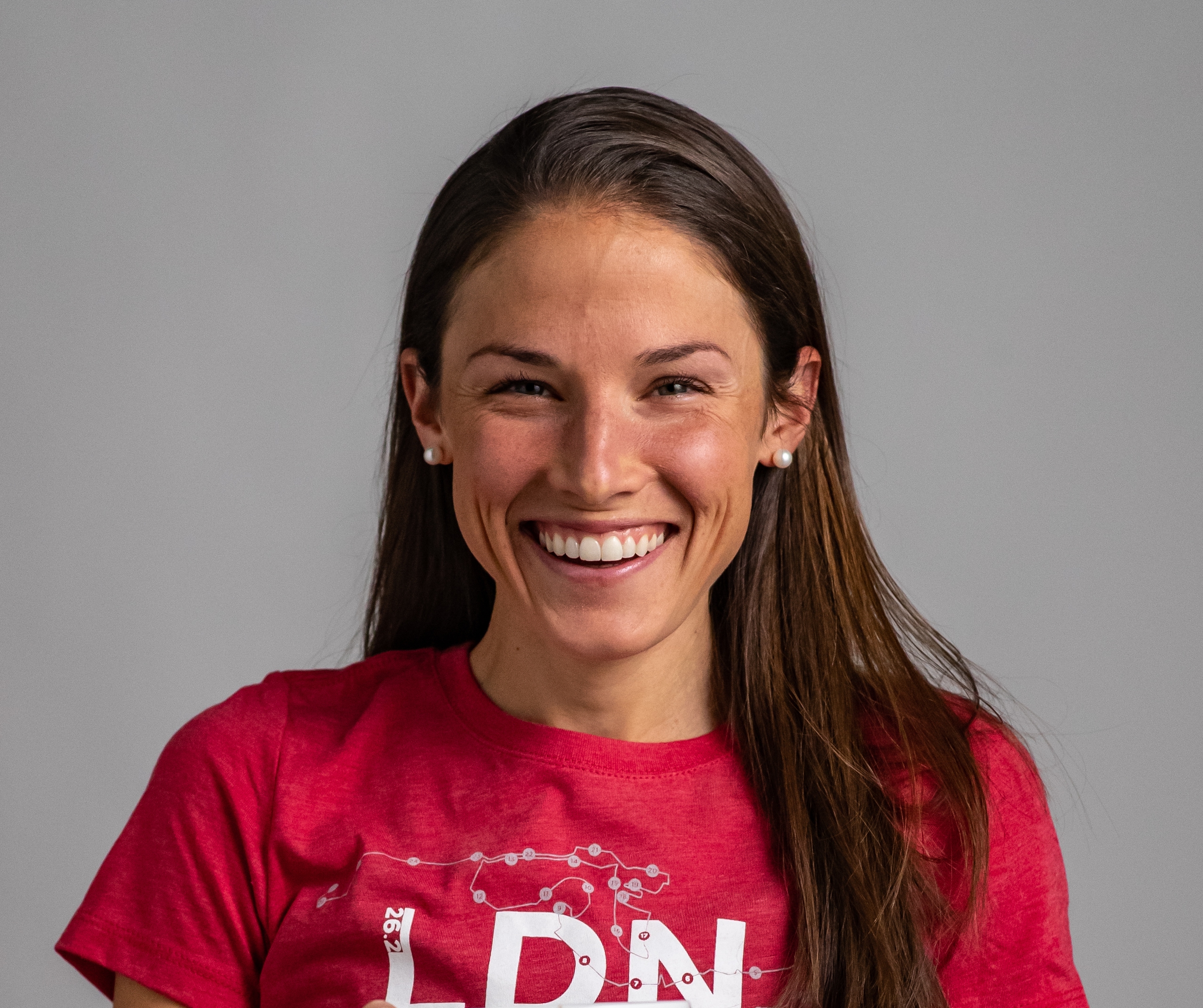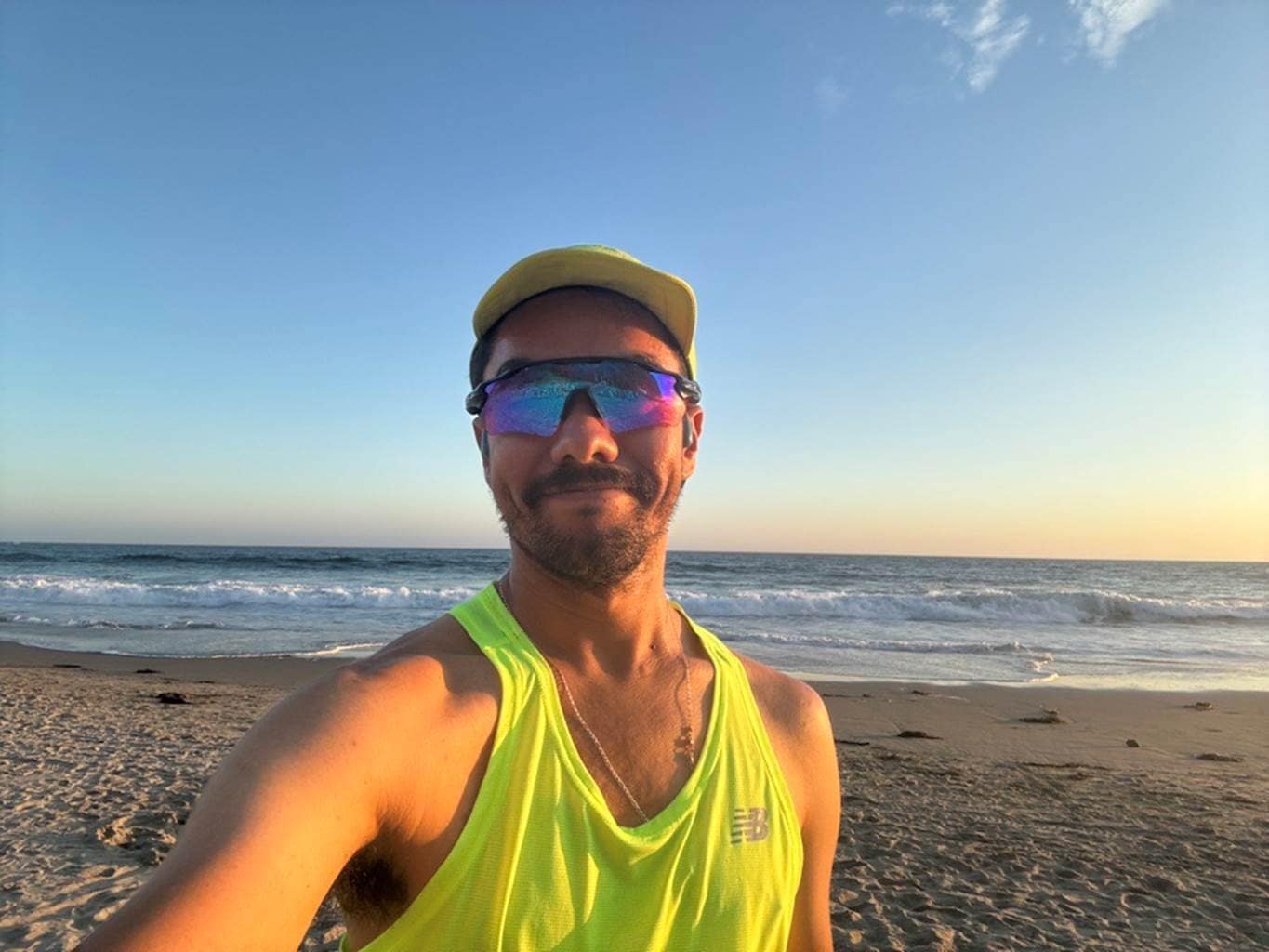Although you don’t need much gear to start running, the items you do need are worth investing in. Your shoes are the most important purchase you’ll make; they help propel you through the repetitive motions of running and serve as a buffer between your feet and the ground.
But buying a pair of running shoes isn’t as simple as it was even a decade ago. In addition to choosing among about a dozen leading brands, you have to account for the surfaces you’ll be training on, your foot structure and body type, and features such as support, cushioning and drop (see the Buying Advice section below for details on these features).
Simplify your search with the help of some running-savvy REI staffers. Here are seven of their recommendations for beginner running shoes, chosen for their comfort, versatility and smooth rides.
Staff Picks
For quick recommendations, check out our roundup below, or scroll down for more in-depth reviews.
Best Shoes for Beginner Road Runners: HOKA Clifton 9 (women’s) (men’s)
Best Shoes for Beginner Trail Runners: HOKA Speedgoat 6 (women’s) (men’s)
Best Zero-Drop Beginner Running Shoes: Altra Escalante 4 (women’s) (men’s)
Best Beginner Running Shoes for Long Runs: On Cloudeclipse (women’s) (men’s)
Best Beginner Running Shoes for Recovery Runs: On Cloudmonster 2 (women’s) (men’s)
Best Beginner Running Shoes for Heavier Runners: HOKA Bondi 8 (women’s) (men’s)
Best Beginner Running Shoes for Injury-Prone Runners: ASICS GEL-Kayano 31 (women’s) (men’s)
Best Shoes for Beginner Road Runners & Editor’s Choice Award Winner
HOKA Clifton 9 Road-Running Shoes
Cushioning Maximum
Midsole CMEVA
Outsole Rubber
Heel-to-Toe Drop (mm) 5
Weight 14.6 oz. (women’s); 1 lb. 1.4 oz. (men’s)
If you’ll mostly be running on paved surfaces, you can’t go wrong with the HOKA Clifton 9 as a daily trainer. It’s an Editors’ Choice Award winner and the pick for best recovery shoe in Best Road Running Shoes of 2024 for good reason. Lighter and more cushioned than its predecessors, it features a responsive new foam, a plusher heel and the substantial sole that HOKA is known for, with a moderate 5 mm heel-to-toe drop. The women’s model weighs just under a pound (14.6 ounces) and the men’s model weighs just over (1 pound, 1.4 ounces).
REI general manager for running and footwear Fan Zhou called the HOKA Clifton 9 a “versatile daily trainer that feels just as good on a 30-minute run as it does on a two-hour-long run.” And REI store manager Alan Ortega, who has put at least 700 miles on his pair, said that they keep him feeling consistent even during very long mileage and allow him to pay attention to the run rather than his footwear. Multiple customers validated the comfort factor, reporting that the Clifton 9 doubles as an excellent shoe for doctors, nurses and others who have to be on their feet for several hours at a time.
Best Shoes for Beginner Trail Runners
HOKA Speedgoat 6 Trail-Running Shoes
Cushioning Maximum
Midsole CMEVA
Outsole Vibram® Megagrip with Traction Lug
Heel-to-Toe Drop (mm) 5
Weight 1 lb. 0.4 oz. (women’s); 1 lb. 3.6 oz. (men’s)
When you’re running on uneven terrain, you especially don’t want to wonder whether your footwear is up for the challenge. With the HOKA Speedgoat 6, the latest version of the much-loved trail-running shoe, you won’t. According to Ortega, who’s run around 400 miles in his pair, it’s “a great shoe that inspires confidence on the trail,” whether you’re darting across wet rock or loose dirt. “You can run over anything and not feel like you’re going to fall.” That’s largely due to the Speedgoat 6’s grippy bottoms, featuring 5 mm lug placements inspired by a goat’s hoof. It also has protective toe bumpers, an internal support chassis, maximum cushioning and a 5 mm heel-to-toe drop. Even with all that, the shoe won’t feel heavy underfoot, coming in slightly north of a pound for the pair in both men’s and women’s sizing.
As a beginner, your runs may be relatively short, but you’ll be able to rely on your Speedgoat 6s for a long time, whether you eventually build mileage or simply want to get the most bang for your buck. Zhou ran a 100-mile ultra in his pair and attests that they are “the GOAT of trail-running shoes.”
Best Zero-Drop Beginner Running Shoes
Altra Escalante 4 Road-Running Shoes
Cushioning Moderate
Midsole Altra EGO™ foam
Outsole Rubber
Heel-to-Toe Drop (mm) 0
Weight 15 oz. (women’s); 1 lb. 3 oz. (men’s)
Zero-drop shoes, in which the heel is level with the forefoot, aren’t for everyone. (In traditional shoes, the heel is elevated, releasing some pressure from the Achilles tendon.) But some runners love how naturally they move and connected they feel to the ground while wearing zero-drop shoes—much like going barefoot but with a layer of protection and cushioning. If you’re curious about such a ride, and don’t have any medical issues or muscle imbalances preventing you from wearing a more minimalist shoe, the Altra Escalante 4 is a good place to start.
Read more: Barefoot/Minimalist Running Shoe Basics
This shoe combines the brand’s signature wide toe box and snug midfoot, a 24 mm heel and forefoot stack height, and gridlike grooves in the midsoles. “It’s everything you need for a great run and nothing you don’t,” says Zhou. Ortega credits it with “letting your body do what it naturally does” while freeing you up to focus on your form. On top of its trail-running virtues, the Altra Escalante 4 received the American Podiatric Medical Association Seal of Acceptance/Approgal, awarded to products that promote good foot health.
Another option: For a trail-specific zero-drop model, try the Altra Rivera 4 (women’s and men’s).
Best Beginner Running Shoes for Long Runs
On Cloudeclipse Road-Running Shoes
Cushioning Maximum
Midsole Helion superfoam
Outsole Rubber
Heel-to-Toe Drop (mm) 6
Weight 1 lb. 1.3 oz. (women’s); 1 lb. 5.7 oz. (men’s)
What qualifies as a long run differs from person to person, but any run that has you on your feet for a substantial amount of time warrants a shoe that can cushion the journey and withstand the pounding. The On Cloudeclipse road-running shoes were designed to do just that. They sport two layers of cushioning underfoot, superfoam midsoles, grippy rubber compound outsoles and an easy 6 mm drop. The result, according to Zhou, is an “amazingly cushioned and responsive” shoe.
While several REI customer-reviewers have commented on the shoe’s tendency to squeak, there is plenty to rave about too. Some likened the On Cloudeclipse to marshmallows, while others compared the shoes to clouds, air and springs. As the ultimate testimony, more than one customer credited this model with their conversion to On from other brands.
Best Beginner Running Shoes for Recovery Runs
On Cloudmonster 2 Road-Running Shoes
Cushioning Maximum
Midsole Helion superfoam
Outsole Rubber
Heel-to-Toe Drop (mm) 5.5
Weight 1 lb. 1.6 oz. (women’s); 1 lb. 4.8 oz. (men’s)
The goal of recovery runs, which are typically on the shorter and easier side, is to add to your mileage bank while allowing your body to bounce back from more strenuous sessions. For such runs, the On Cloudmonster 2 is hard to beat. It features a new plate in the midsole that was designed for propulsion, improved superfoam that adds bounce and absorbs impact, an outsole with an enhanced traction pattern, and a moderate drop.
Ortega called On Cloudmonster 2 his “favorite On shoe, hands down,” because it offers bounce, even at slow paces. Zhou said that the rocker in the outsole “gives you the sensation of running on clouds that are also pushing you forward.” In her return to running, Cassie da Costa, the REI Run editor for Uncommon Path and Expert Advice has appreciated the shoe’s “sturdy support and lightness” and summed up her experience this way: “Whether you’re run/walking or slowly stacking bricks with continuous easy runs, [the On Cloudmonster 2] are a reliable and enjoyable choice.”
Best Beginner Running Shoes for Heavier Runners
HOKA Bondi 8 Road-Running Shoes
Cushioning Maximum
Midsole Foam
Outsole Durabrasion rubber
Heel-to-Toe Drop (mm) 4
Weight 1 lb. 1.8 oz. (women’s); 1 lb. 5.6 oz. (men’s)
Heavier runners shopping for training shoes that amply protect their joints would do well to start with HOKA, a brand known for its substantial stack height and maximum cushioning. The Bondi 8, in particular, features the total package: a light but durable foam, a rear crash pad that softens the landing and smooths the transition from heel to toe, and a stack height of 31 mm for women and 33 mm for men. With all that, the HOKA Bondi 8 manages to stay relatively lightweight, coming in at 1 pound, 5.6 ounces for a men’s pair and 1 pound, 1.8 ounces for a women’s pair.
And anyone, of any body size, can relish the ride of the Bondi 8. Zhou dubbed the Bondi 8 “the Cadillac of highly cushioned shoes on the market” and said that it caters to walkers, joggers and people who spend many hours on their feet. Numerous REI customer-reviewers echo this sentiment, citing more comfortable shifts, farther and faster walks, and even a reduction in foot aches and pains.
Best Beginner Running Shoes for Injury-Prone Runners
ASICS GEL-Kayano 31 Road-Running Shoes
Cushioning Maximum
Midsole FF BLAST™ PLUS ECO
Outsole Hybrid ASICSGRIP
Heel-to-Toe Drop (mm) 10
Weight 1 lb. 2.8 oz. (women’s); 1 lb. 5.5 oz. (men’s)
Some bodies tend to be a little more fragile than others. If you’re in the injury-prone camp, the ASICS GEL-Kayano 31 is worth an early addition to your running-shoe arsenal. “[The GEL-Kayano] has been around for more than three decades for a reason,” says Zhou, and the shoes have only gotten better with time. The latest model blends stability and comfort, featuring external back heel counters for stability, a grippy outsole for traction, and maximum but lightweight cushioning. The GEL-Kayano 31 also features a beefy 10 mm drop, with a maximal 40 mm heel stack height and 30 mm forefoot stack height (39 mm and 29 mm, respectively, in the women’s model). The shoes have guiderails, but not aggressive ones—rather, ASICS made sure the midsole’s geometry supports an even landing. Even runners who don’t usually select a stability shoe will feel comfortable running in this updated model.
All of that yields a shoe with “guidance and support to give you confidence while still maintaining a cushioned and responsive ride,” according to the same staffer. That assurance and predictability is something that every runner—especially those who are susceptible to injury—should ask of their daily trainer.
Buying Advice
In this day and age, you can afford to be picky with your running shoes. Here are some factors to keep in mind as you shop for the best running shoes for you.
- Terrain What terrain will you spend most of your time running on: Roads and sidewalks? Manicured trails? Technical trails? Treadmills? Tracks? While you can get away with wearing the same shoe for different surfaces, you’ll have a better experience if you shop more specifically. Trail shoes, for example, are grippier and stiffer than road shoes, which are lighter and more flexible.
- Foot strike Another consideration is the way your feet plant on the ground. Most runners are basic, or neutral, pronators, with feet that roll slightly inward when they land. Other runners have feet that roll excessively inward (overpronators) or outward (supinators). It’s ideal to find shoes that support your foot strike, especially if you’re an overpronator or supinator; the right pair can help you find a smoother stride and reduce your risk of injury.
- Support Your foot strike can also help you determine the level of support you need in your shoes. Neutral runners, mild pronators and supinators do well in neutral shoes, which lack the motion control of the other two categories. Mild to moderate overpronators should look for stability shoes, which often feature guide rails to control excessive side-to-side motion. And more severe overpronators may want to try motion-control shoes, which counter overpronation with stiffer heels and firm posts that reinforce the arches.
- Cushioning How cushioned you want your running shoes to be is largely a matter of personal preference. The spectrum goes from barefoot shoes on one extreme, which have zero to little cushioning, arch support, or stability features, and a very thin sole, to maximally cushioned shoes, which have thick midsole padding and soft foam underfoot. Minimal and moderate cushioning lie in the middle.
- Heel-to-toe drop Often just called “drop,” this refers to the difference in cushioning between the heel and toe of a shoe and plays a role in the way your feet plant on the ground. Traditional running shoes have a 10 mm drop, give or take, with ample cushioning in the heel to support heel striking. Lower-drop shoes have a drop of more than 0 mm but less than 8 mm. And zero-drop shoes have the same cushioning beneath the heels and toes, thus promoting a midfoot strike.
- Comfort and fit You obviously want your shoes to feel good—not just on your feet, but in motion. Most specialty running stores allow you to take the pairs you’re interested in on a test run in the store or right outside it. If that’s an option, take advantage. If you’re shopping online, make sure you know the return policy before purchasing, as many but not all retailers allow you to return lightly worn pairs if they aren’t working for you. When trying on, make sure to try on both the left and right shoes (since many people have a slight size discrepancy), to wear the socks and/or insoles you plan to run in, and to leave at least a thumbnail’s length of space at the top of the toe box to allow for some natural swelling to occur as you run.
Our Process
Four REI Co-op staff members contributed to this article with their running shoe recommendations and opinions based on their personal experience training and racing in them. We also pulled from the reviews of a handful of REI customers. The seven choices above reflect the latest and best running shoes for beginners currently offered at REI.



































































